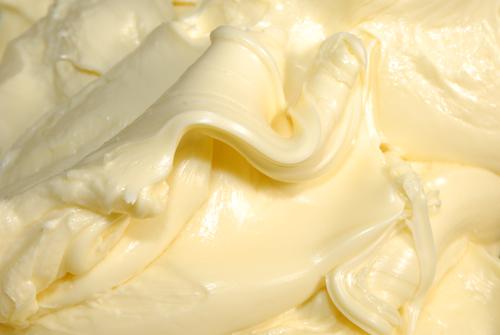“Churned butter” is a designation indicating that butter comes from a cream that has been matured and churned traditionally. This process gives a superior quality and more flavour to the finished product.
Butter ought to be manufactured through churning, as this is the only process to turn cream into butter. Churning is the main manufacturing step to obtain butter. Cream is battered energetically to burst fat globules and form bigger and bigger fat grains. The liquid phase, the buttermilk, is expelled and recovered. Grains mass is then knead to agglomerate grains homogeneously and create butter.
The designation “Churned butter” is not controlled. Nevertheless a decision of the Appeal Court in Rennes on July 13th 1993 states that this designation may only apply to products manufactured with a churn during the whole manufacturing process. As a result a butter whose earlier phases have been done in a buttermaking machine cannot use the designation “churned butter” even if the final blending is done in a churn.
Traditional churning (churn in stainless steel – mechanical process, discontinuous) offers many advantages compared to continuous production (in buttermaking machines). These advantages regard organoleptic, physical and chemical qualities and preservation capacity.
There are many benefits of churned butter:
- Lower air content
- More colourful butter
- Neither soft, nor tough consistency after storage
- Better preservation (better water distribution)
- Good butter taste, (longer cream maturation)
